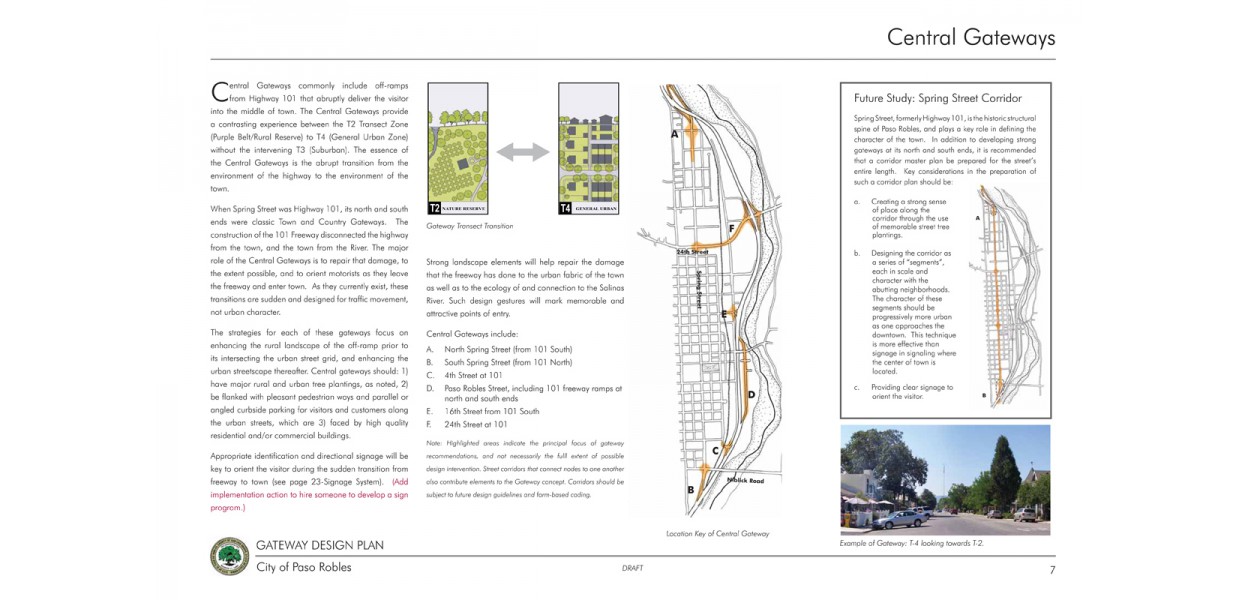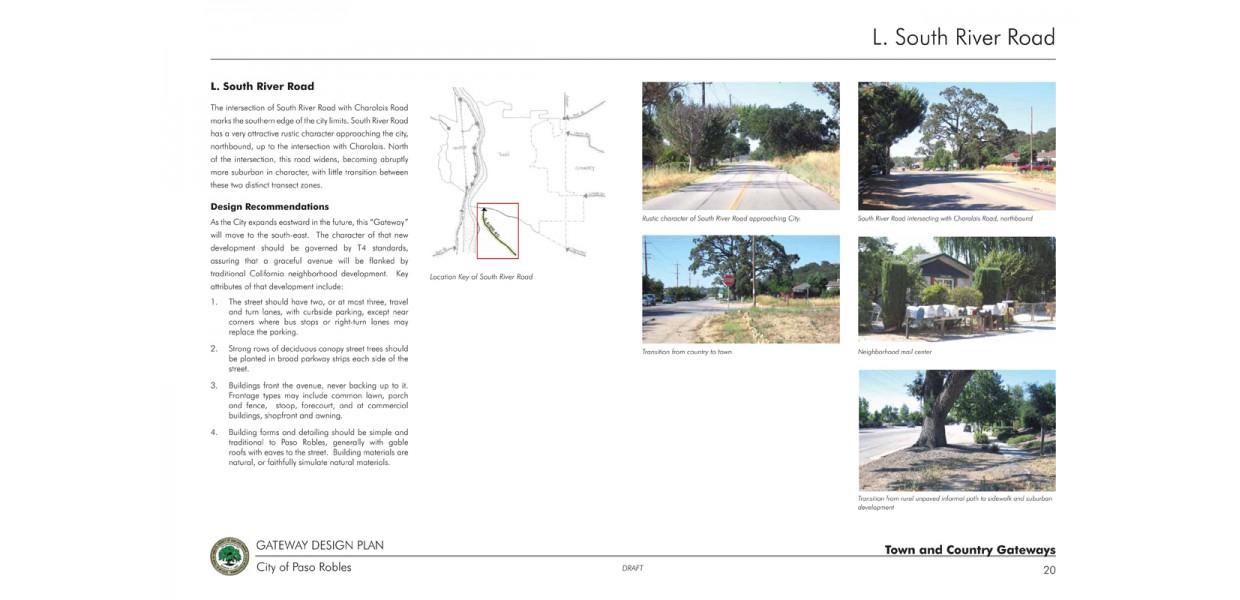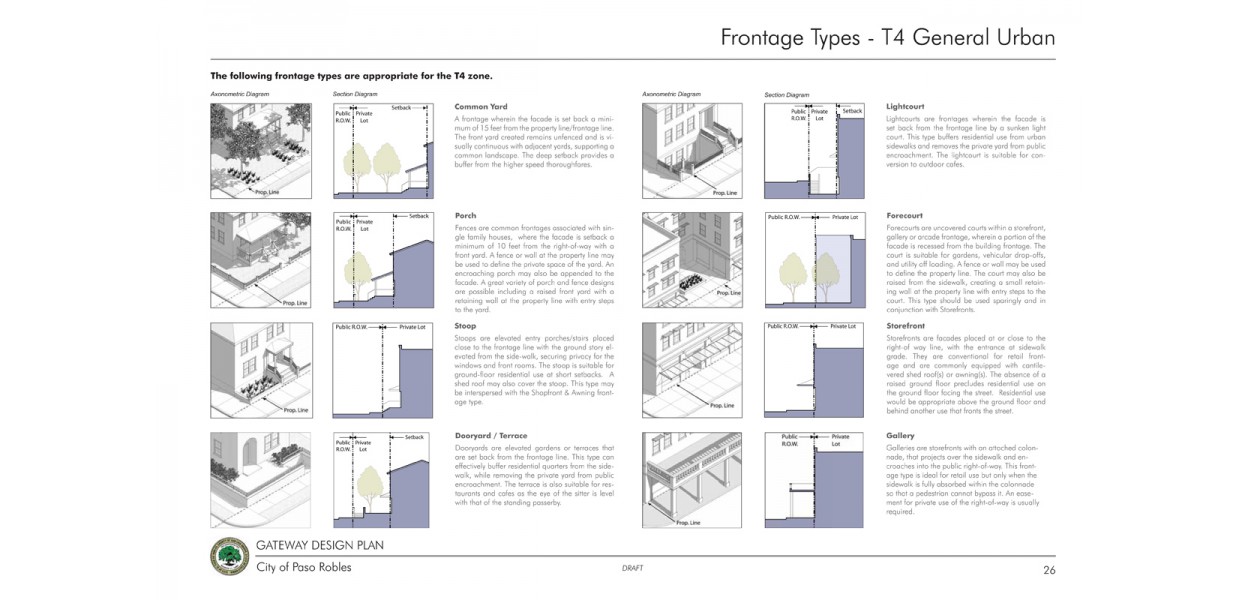Gateway Plan & Design Standards - Paso Robles, California







Paso Robles is a small city in the Salinas River Valley of California's central coast, and one of the key implementation actions identified in their general plan was the preparation of standards and guidelines for the "gateways" to the City. The City engaged a team from HDR Town Planning - under the direction of David Sargent - to work with them to clarify the nature of the numerous "gateways" to town, and to help them envision appropriate design concepts and prepare standards to help shape and improve them over time.
The team worked with a committee of planning commissioners and Council members - beginning with some pre-conceptions regarding signage and monumentation - and developed the notion that "gateways" to a town are more about the transition from being in the country - or on the freeway - one moment, and then being in the town the next. From this basic idea, two gateway types were clarified: "town and country gateways" on the rurual road approaches from the surrounding natural and agricultural landscape, and "central gateways" from the 101 Freeway, which runs through the center of the city, cleaving it in two. The concept of the transect was introduced, and organizes the central gateways into urban places - generally T4 - and the town and country gateways into rural and suburban places - T2 and T3. These gateways are both varied and dynamic - each gateway is a place on its own terms and will change over time as the City grows and evolves. Accordingly the standards and guidelines that will help shape them over time are structured as a very simple, transect-based form-based code that provides guidance as to the types of buildings, frontage conditions, and streetscapes that will generate the appropriate type of place for each gateway. In 2009 the Plan was recognized by the Central Coast Chapter of the American Planning Association with a Best Practices Award of Excellence for Outstanding Planning.